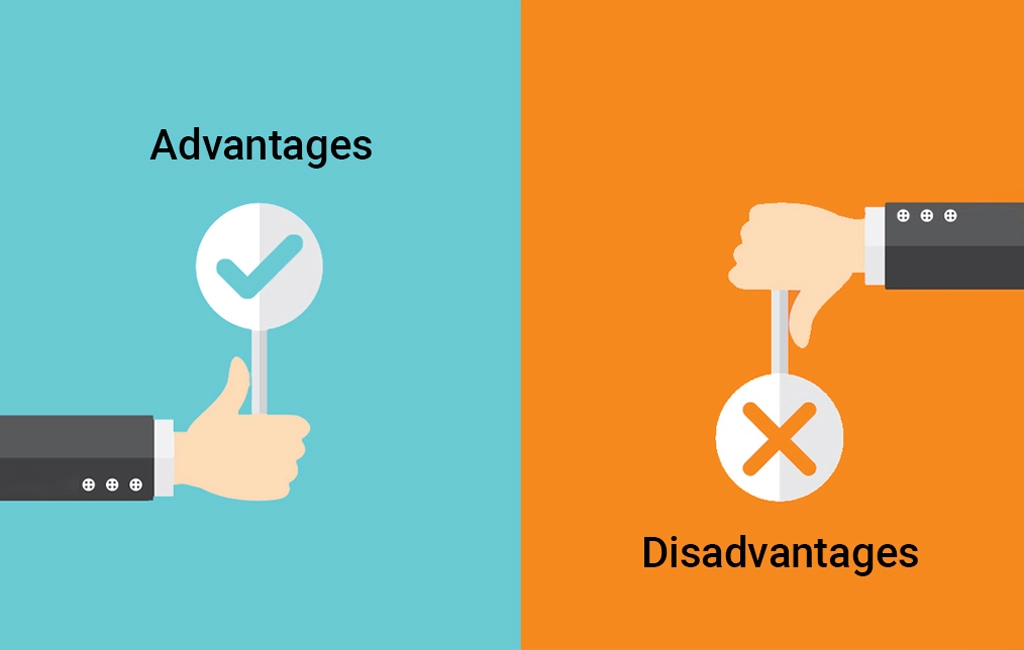Investing can often be a complex and intimidating journey, especially for those new to navigating the financial markets. A Systematic Investment Plan (SIP) simplifies this journey, allowing investors to contribute a consistent sum of money at regular intervals, typically into mutual funds. This approach not only makes investing more accessible but also instills a disciplined investment habit.
SIPs are designed to automatically withdraw funds from your account, seamlessly integrating investing into your financial routine. This method, rooted in the principle of dollar-cost averaging, enables investors to buy more shares when prices are lower, potentially maximizing returns over time. With most mutual fund companies offering SIPs, it has become a popular and convenient option for both novice and seasoned investors.
SIPs represent more than just a methodical investment tool; they embody a strategic approach to wealth accumulation. By committing to regular investments, investors can navigate market volatility more effectively, purchasing shares at various price points and averaging costs. This strategy mitigates the risk associated with market timing and paves the way for building a robust portfolio over time.
In the following sections, we’ll explore the multifaceted benefits and strategies of Systematic Investment Plans, offering insights into how they can be a game-changer in your investment journey. Embark on an insightful exploration of SIPs with us as we unravel their potential to transform your investing and wealth creation approach.

What is a Systematic Investment Plan & How Does It Work?
A Systematic Investment Plan (SIP) is a structured method for investors to contribute regular, fixed payments into a mutual fund, trading account, or retirement account like a 401(k). This investment approach is particularly beneficial for those who wish to invest smaller amounts of money consistently, leveraging the long-term advantages of dollar-cost averaging (DCA). The essence of DCA is to build wealth or a portfolio over time through periodic, equal transfers of funds into an investment.
Mechanism of SIPs
SIPs are offered by mutual funds and various investment companies, presenting a spectrum of investment opportunities. They allow investors the flexibility to commit smaller sums of money periodically instead of the financial strain of substantial lump-sum investments. The frequency of these payments into SIPs is typically set at a regular pace – be it weekly, monthly, or quarterly.
The fundamental principle of SIPs lies in regular and periodic purchases of shares or units of securities, such as those in a fund or other types of investments. Dollar-cost averaging is a key strategy employed in SIPs, where investors consistently invest a fixed dollar amount into security, irrespective of its fluctuating price.
Consequently, investors buy shares at diverse prices and in varying quantities over time. While some plans may permit specifying a fixed number of shares for each purchase, the typical approach involves investing a fixed amount each time. This results in acquiring fewer shares when prices are high and more when they are low, making the average cost per share potentially more favorable over time.
The Passive Nature of SIPs
SIPs are generally considered passive investments. Once initiated, investments accumulate in the plan, regardless of market performance. Therefore, investors must monitor their SIPs closely, particularly as they approach significant milestones like retirement. Upon reaching a certain portfolio value or nearing retirement, investors might consider transitioning to more actively managed investment strategies for potential further growth.
However, consulting with a financial advisor or investment expert is always advisable. These professionals can offer tailored advice, ensuring that your investment choices align with your financial goals, risk tolerance, and life stage.

Advantages and Disadvantages of Systematic Investment Plans
Systematic Investment Plans (SIPs) have gained popularity among investors for their structured approach to investing. However, like any financial instrument, they come with their own set of advantages and disadvantages.
Advantages of Systematic Investment Plans
Systematic Investment Plans (SIPs) offer a simplified and efficient approach to investing, making it accessible to a wider audience. SIPs come with a host of advantages that cater to both novice and experienced investors alike.
Ease of Investment
One of the most attractive features of SIPs is their ease of investment. Once you set up a SIP, the process becomes almost entirely automated. This means that after deciding on the amount and frequency of your contributions, the investment is made regularly without any further action required on your part.
This automation is particularly advantageous for busy individuals or those who may not have the expertise or inclination to actively manage their investments. It ensures continuous investment without the need for constant monitoring or decision-making.
Low Financial Impact
SIPs are designed to be financially accommodating. By allowing investors to contribute small, manageable amounts at regular intervals, they reduce the burden of investing a large sum of money at once. This makes SIPs an ideal investment vehicle for individuals with limited resources or those who prefer to spread their financial commitments over time. It opens up investment opportunities to a broader range of investors, enabling almost anyone to start building their investment portfolio.
Emotion-free Investing
Investing can be an emotional rollercoaster, with market highs and lows influencing decision-making. SIPs offer a way to circumvent this emotional investment journey through a Dollar-Cost Averaging (DCA) strategy. This approach involves investing a fixed amount at regular intervals regardless of market conditions, which helps avoid the pitfalls of trying to time the market. By reducing the emotional aspect of investing, SIPs can lead to more rational and potentially more profitable investment decisions.
Disciplined Savings
A key advantage of SIPs is the discipline they instill in an investor’s financial habits. Regular contributions to a SIP mean saving becomes a routine part of an individual’s financial planning. This disciplined approach to saving and investing can significantly impact long-term wealth accumulation, as it encourages consistent investment behavior and helps build a substantial corpus over time.
Reduction in Average Cost
SIPs employ the Dollar-Cost Averaging strategy, which can reduce the average cost of your investment over time. By investing a fixed amount regularly, you buy more units when the price is low and fewer units when the price is high. Over time, this can result in a lower average cost per unit than a lump sum investment, which might be made at a higher market price.
Lower Risk
The regular and incremental investment approach of SIPs spreads out the risk associated with market fluctuations. By investing small amounts over a period of time, rather than a large sum in one go, the investor is less exposed to the risk of market timing. This can be particularly beneficial during periods of high market volatility, as it prevents the investor from putting a large sum at risk during an unfavorable market period.

Disadvantages of Systematic Investment Plans
While Systematic Investment Plans (SIPs) are celebrated for their convenience and disciplined approach to investing, it’s essential to acknowledge that they aren’t without drawbacks. Understanding the potential disadvantages of SIPs is crucial for investors to make informed decisions that align with their financial goals and circumstances.
Long-term Commitment
SIPs typically require a long-term commitment from investors, often spanning several years or even decades. This extended timeframe can be a significant drawback for those seeking flexibility or liquidity in their investments. A long-term commitment might not align well with the financial goals or life situations of all investors, especially for those who may need access to their funds on short notice. Potential investors must consider their long-term financial stability and ability to commit over an extended period before opting for a SIP.
Potential for High Charges
One of the more daunting aspects of SIPs is the potential for high charges, particularly when it comes to early withdrawals. Investors looking to exit a SIP before the end of the term may face hefty fees, which can be a substantial percentage of the invested amount, especially if the withdrawal occurs within the initial years of investment. These charges can significantly erode the value of the investment, making SIPs less attractive for those who aren’t certain they can commit for the long haul.
Penalties for Missed Payments
The structured nature of SIPs means that regular contributions are encouraged and required. Missing scheduled payments can lead to penalties and, in some cases, the termination of the SIP itself. This can be a significant disadvantage for investors who might face financial uncertainties or whose income isn’t consistent. The rigidity in payment schedules can thus pose a challenge and add a layer of risk to the investment.
Setup Costs
Setting up a SIP often involves certain initial costs, including account creation and sales charges. These fees can vary but sometimes be a significant portion of the first year’s investments. For investors starting with a smaller capital base, these setup costs can be a deterrent, reducing the net returns from the investment in the initial period. It’s important for investors to factor in these costs when calculating the expected returns from their SIP.
Additional Fees
Beyond the basic investment costs, SIPs may come with additional fees, including mutual fund management fees, custodial fees, and other service charges. These fees can accumulate over the investment period and can impact the overall returns. Investors should carefully review all associated fees and consider how they might affect their investment goals and returns in the long run.
Missed Market Opportunities
SIPs operate on a fixed schedule, which means they might not always capitalize on market dips and bargains. The inability to adjust investment amounts in response to market conditions can lead to missed opportunities, especially in volatile or rapidly changing markets. This aspect of SIPs can disadvantage those looking to maximize returns by taking advantage of market lows.

What is the Process of Investing & Cost Averaging in SIP Plans?
Investing in Systematic Investment Plans (SIPs) has become increasingly accessible and straightforward, thanks to the offerings by various brokerages and mutual fund companies. Understanding the process of investing in SIPs and the concept of cost averaging is crucial for making informed investment decisions.
Process of Investing in SIPs
Major financial institutions such as Vanguard Investments, Fidelity, and T. Rowe Price offer SIPs, making it possible for investors to contribute relatively small amounts. The convenience of SIPs largely stems from their automation.
Typically, SIPs can be set up to automatically draw funds from an investor’s account on a monthly, quarterly, or other periodic basis. This automation requires the investor to maintain a funding source, like a money market or another liquid account, from which these regular investments are made.
For instance, T. Rowe Price offers a product named Automatic Buy, which is designed for SIPs. After an initial investment of around $1,000 to $2,500, investors can continue with contributions as low as $100 per month. These contributions can be made in both IRA and taxable accounts, albeit primarily for mutual fund purchases, not individual stocks. Additionally, these regular payments can be directly transferred from various sources, including a bank account, paycheck, or even a Social Security check, albeit with certain restrictions in the case of Social Security payments.
Cost Averaging in SIP Plans
The principle of Dollar-Cost Averaging (DCA) is integral to SIPs. Advocates of DCA argue that this strategy can decrease the average cost per share of the security over time. The idea is that by investing a fixed amount regularly, regardless of the share price, an investor ends up buying more shares when prices are low and fewer when they are high.
This can lead to a lower average cost per share throughout the investment. However, it’s important to note that DCA might not always be the most cost-effective strategy, particularly if the stock price rises steadily and significantly over time.
A key benefit of DCA, and by extension SIPs, is the elimination of emotional decision-making. Automatic investment schedules prevent investors from making impulsive decisions based on short-term market fluctuations. For example, during periods of soaring stock prices, there’s often a rush to buy more and, conversely, a rush to sell during prolonged market downturns.
This pattern of buying high and selling low is counterproductive and is something DCA and SIPs help to avoid. Investors can maintain a more rational and long-term focused approach by sticking to a predetermined investment schedule.

Expected Returns from Systematic Investment Plan
When it comes to the returns one can expect from Systematic Investment Plans (SIPs), it’s essential to understand that they are closely tied to the performance of the underlying investment instruments. SIPs have garnered a reputation for potentially yielding attractive returns over the long term, particularly when the investments are made in equity-based funds. However, as with any investment linked to the stock market, SIP returns are not guaranteed and are subject to market fluctuations.
The key to SIPs’ potential success lies in their ability to leverage the power of compounding and dollar-cost averaging. Over an extended period, these factors can significantly influence the growth of an investment. Equity-based SIPs, in particular, tend to outperform other asset classes over the long term, despite their susceptibility to market volatility. This is because equity markets, historically, have shown an upward trend over extended periods, which can result in substantial growth for disciplined SIP investors.
However, investors must set realistic expectations and understand that SIPs, like any market-linked investment, carry inherent risks. The returns from SIPs are influenced by a multitude of factors, including market cycles, the economic environment, and the specific performance of the chosen mutual funds.
Therefore, while SIPs can be a powerful tool for wealth creation, they should be approached with a long-term perspective and an understanding of the potential risks involved. Consulting with a financial advisor to align SIP investments with one’s risk tolerance and financial goals is always prudent.
Final Words
A Systematic Investment Plan offers a disciplined, flexible, and potentially less risky way of investing in mutual funds. They suit investors looking to build wealth over time, with the added benefit of rupee cost averaging. However, like any investment, it is crucial to understand the associated risks and to consider individual financial goals and risk tolerance.
Join us at EduCounting for an in-depth exploration of SIPs and other financial instruments, and take the next step in your journey towards financial literacy and independence. We offer a wealth of information, expert advice, and practical tips to help you navigate the complexities of financial planning and investment. Whether you’re a seasoned investor or just starting out, EduCounting is your go-to resource for all things related to personal finance and investment strategies.
FAQs
What is an example of a systematic investment?
An example of a systematic investment is an SIP where an investor consistently allocates a specific amount at regular intervals. For instance, one might establish an SIP to invest $100 monthly in a mutual fund like XYZ. This fixed amount is automatically invested in the chosen fund on a predetermined date each month.
Which is the best SIP per month?
The “best” SIP per month varies based on individual financial goals, risk tolerance, and market conditions. Evaluating various SIP options is advisable, considering factors like fund performance, costs, and investment objectives. Consulting a financial advisor can also provide personalized recommendations based on one’s unique financial situation.
Is investing in a systematic investment plan safe?
Like any market-linked investment, investing in an SIP carries inherent risks due to market fluctuations. However, SIPs often reduce the risk through dollar-cost averaging and long-term investment strategies. While not completely risk-free, SIPs can be a safer option compared to lump-sum investments, especially for those with a long-term investment horizon.









